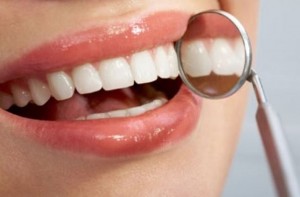Gum Disease Prevention and Treatment
Gum disease is one of the most common dental problems that we face. It is also one of the most preventable dental issues. In this article I will discuss the most common types of gum disease and what you can do to prevent them from infecting your mouth.
 Gingivitis is the most common type of gum disease. The first symptoms of gingivitis are bleeding gums, puffy gums that become sore when you brush your teeth, and bad breath. As the disease progresses your gums may change from pink to red, become tender, or appear to recede and pull away from the teeth. In rare cases you may suffer bone loss due to infection eating away at the jawbone through the deep pockets formed by receding gums. Check out the best portland dentist, for more info about how you should care your teeth and gums.
Gingivitis is the most common type of gum disease. The first symptoms of gingivitis are bleeding gums, puffy gums that become sore when you brush your teeth, and bad breath. As the disease progresses your gums may change from pink to red, become tender, or appear to recede and pull away from the teeth. In rare cases you may suffer bone loss due to infection eating away at the jawbone through the deep pockets formed by receding gums. Check out the best portland dentist, for more info about how you should care your teeth and gums.
Gingivitis is also the most preventable form of gum disease. Brushing your teeth for three to five minutes with a good quality toothpaste, and flossing are usually sufficient to prevent the disease. There are plaque reducing antiseptic mouthwashes that can be used along with brushing and flossing to ward off the onset of the disease. If your dentist feels that you are at high risk for developing gingivitis he or she may recommend more frequent cleanings to help monitor the situation.
If you have already been diagnosed with gingivitis your dentist will recommend a course of action to treat the disease so that it does not progress and further. Normal treatment involves monitoring the progression of the disease, regular brushing, and deep cleanings by a professional. Advanced cases of gingivitis can require antibiotics, which have been shown to reduce plaque and prevent the infection from spreading to the surrounding tissues.
Failure to treat your ginigivitis can result in periodontitis. Periodontitis means that there is inflammation surrounding the teeth. When this occurs the gums separate from the teeth and form deep pockets. These deep pockets allow bacteria to invade the spaces surrounding the teeth. When this happens plaque can spread and grow below the gum line. The body’s own immune system eventually starts to break down the infection, but also attacks the bone and tissue that hold the teeth in place. In some cases the teeth may become loose and have to be extracted due to lack of support.
Peridontitis can be treated in some cases by the best and effective dentistry. Treatments include oral antibiotics, antiseptic chips that slowly release medicine throughout the gums, and antibiotic gel that is placed in the deep pockets to treat the infection. There are also surgical options available such as flap surgery – to remove tartar deposits, and bone and tissue grafts to make teeth more structurally sound.
Even if you practice good oral health there are also other risk factors for developing gum disease. Smoking is a very significant risk factor, and smoking during gum disease treatment can cause some remedies to fail. Medications that cause dry mouth can also contribute to gum disease by allowing infection to grow. Finally, hormone changes in women can also make the gums sensitive and cause excess bacteria to grow.
Taking good care of your gums and knowing the symptoms of gum disease are your best line of defense against gingivitis and peridontitis. If you have any symptoms of gum disease please visit your dentist right away to find the course of treatment that will work best for you.